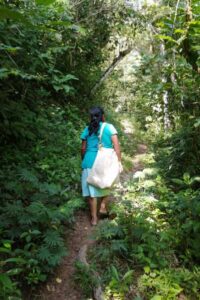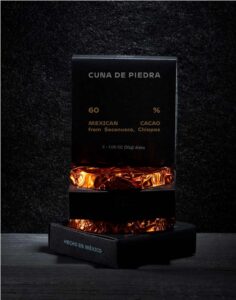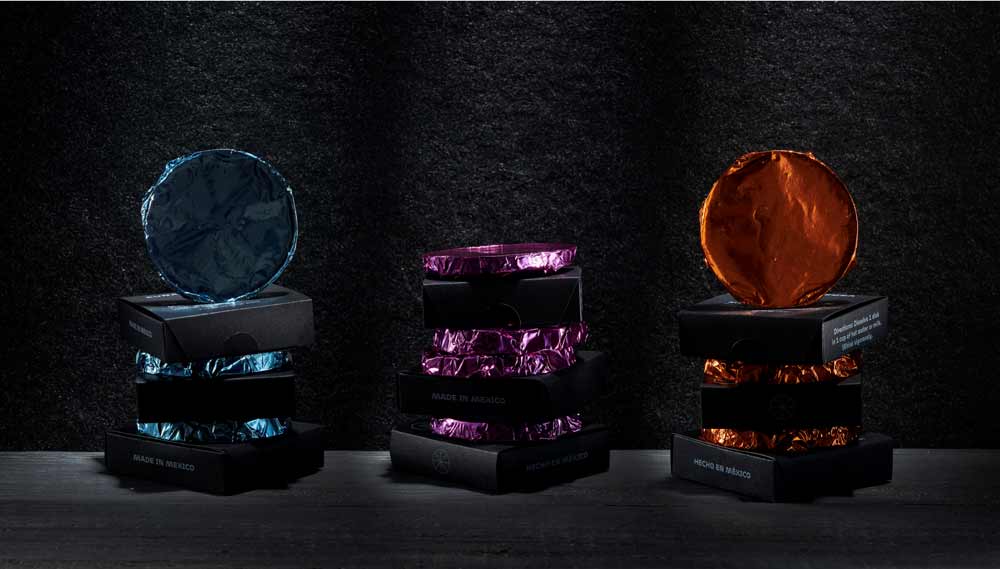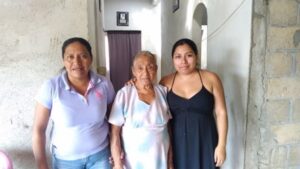The “Chocolate de Mesa” is a traditional Mexican drink whose essence dates back to pre-Hispanic times, the way cacao was consumed before the arrival of the Spaniards. In many places of Mexico (such as Oaxaca) drinking chocolate is still consumed regularly on all occasions: funerals, weddings, baptisms and other festivities, but in other places the tradition has been lost.
That’s why it is essential for us to remember, in the most authentic manner, the way our grandmothers consumed this delicious drink and thus honor the beauty of our traditions and share them to all corners of Mexico and with the rest of the world.
 Located in the northern Zoque region, in Chiapas, Tecpatán is a place whose language and culture are threatened with disappearance. Nowadays the only inhabitants left in the area are women and children, since most of the men migrated to North America in search of a better future.
Located in the northern Zoque region, in Chiapas, Tecpatán is a place whose language and culture are threatened with disappearance. Nowadays the only inhabitants left in the area are women and children, since most of the men migrated to North America in search of a better future.
For this chocolate, we source a Single-estate, Lavado (unfermented, washed) cacao from Doña Elvira Gómez, a third-generation cacao grower whose strength and perseverance have resulted in better and bigger harvests year after year. Hidden in the mountains of Tecpatán, about 1,200 meters above sea level, her 100-year old cacao trees coexist with pataxte (Theobroma bicolor), tangerine trees and banana plants.
Elevation: High-altitude cacao (1,200 m.a.s.l.).
Process: Lavado (unfermented, washed).
Ingredients: Cacao beans, cane sugar.
Flavor profile: Tastes of spices like nutmeg and clove.
Aroma: Light roasted nuts and cacao.
Body: Medium
Mouthfeel: Thin
 Single-estate, Lavado (unfermented, washed) cacao from Doña Dionisia García’s land, which is located in a town called San Felipe de León, within a region known as “La Chinantla”, in the northeast of Oaxaca.
Single-estate, Lavado (unfermented, washed) cacao from Doña Dionisia García’s land, which is located in a town called San Felipe de León, within a region known as “La Chinantla”, in the northeast of Oaxaca.
Doña Dionisia comes from generations of guardians of the Oaxacan cacao legacy, she is a Chinantecan Cuisine ambassador, cacao grower and traditional chocolate maker. In her agroforestal landscape biodiversity is expressed in other native trees like pataxte (Theobroma bicolor), achiote, chicozapote, mamey and banana plants.
To create this chocolate, we were inspired by the traditional “Chocolate de Mesa” of Oaxaca; cacao, cane sugar and a delicate touch of Mexican cinnamon.
Elevation: Mid-altitude cacao (600-700 m.a.s.l.).
Process: Lavado (unfermented, washed).
Ingredients: Cacao beans, cane sugar, Mexican cinnamon.
Flavor profile: Tastes of roasted almonds, nutmeg, and cinnamon.
Aroma: Intense cacao, light roasted nuts and a subtle cinnamon nose.
Body: Delicate
Mouthfeel: Thin
 Doña Dionisia is also in charge of organizing all the other
Doña Dionisia is also in charge of organizing all the other
cacao and pataxte farmers of the village in order to be able
to fulfill orders collectively. Her farm is located at the top of a small mountain. It takes
over an hour by foot to go there from her house, the path is
uphill through the forest.
 The Mokayas domesticated the cacao tree about 4,000 years ago in Soconusco. There’s archaeological evidence of theobromine traces found in pottery dating back to 1,900 B.C. They were the first to process chocolate in Mexico and most probably they were the ones to coin the word “kakawa” in their Mixe-Zoquean language.
The Mokayas domesticated the cacao tree about 4,000 years ago in Soconusco. There’s archaeological evidence of theobromine traces found in pottery dating back to 1,900 B.C. They were the first to process chocolate in Mexico and most probably they were the ones to coin the word “kakawa” in their Mixe-Zoquean language.
We honor this millenary legacy with our reinterpretation of drinking chocolate with single-origin, fermented cacao from RAYEN, a cooperative in the Raymundo Enríquez ejido in Chiapas, composed of 28 members who own 50 hectares of orchards, where cacao is grown alongside mamey, pineapples, and mangoes, as well as tropical flora like heliconias and majestic ceiba trees.
Elevation: Low-altitude cacao (at sea level).
Process: Fermented.
Ingredients: Cacao beans, cane sugar.
Flavor profile: Tastes of grapefruit, hazelnut and raspberry.
Aroma: Cacao and prune.
Body: Heavy
Mouthfeel: Creamy




